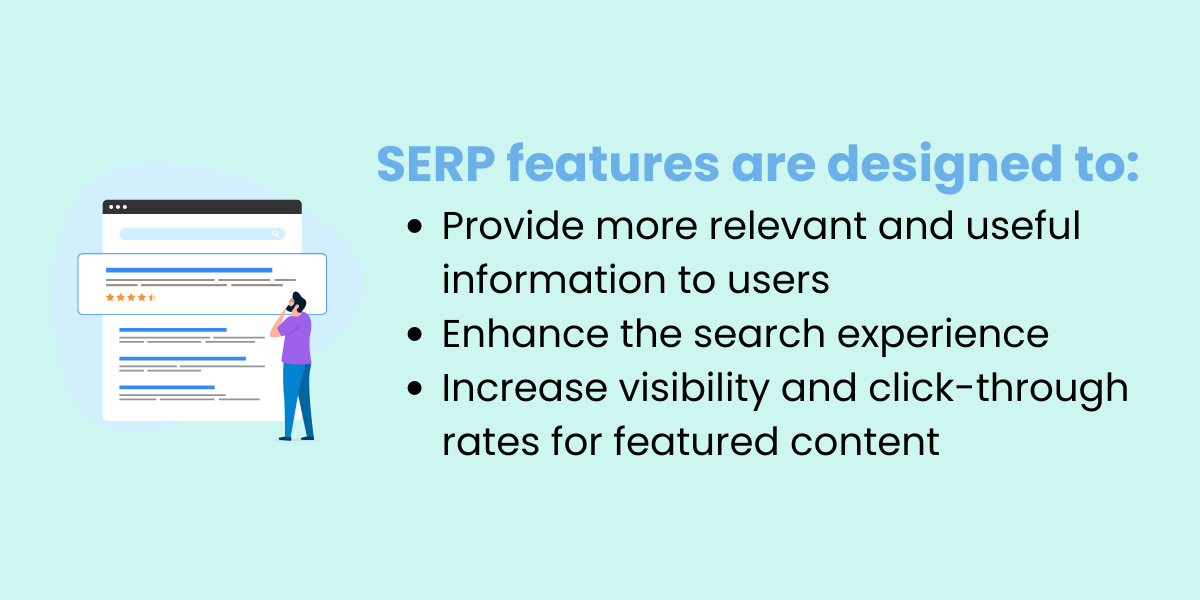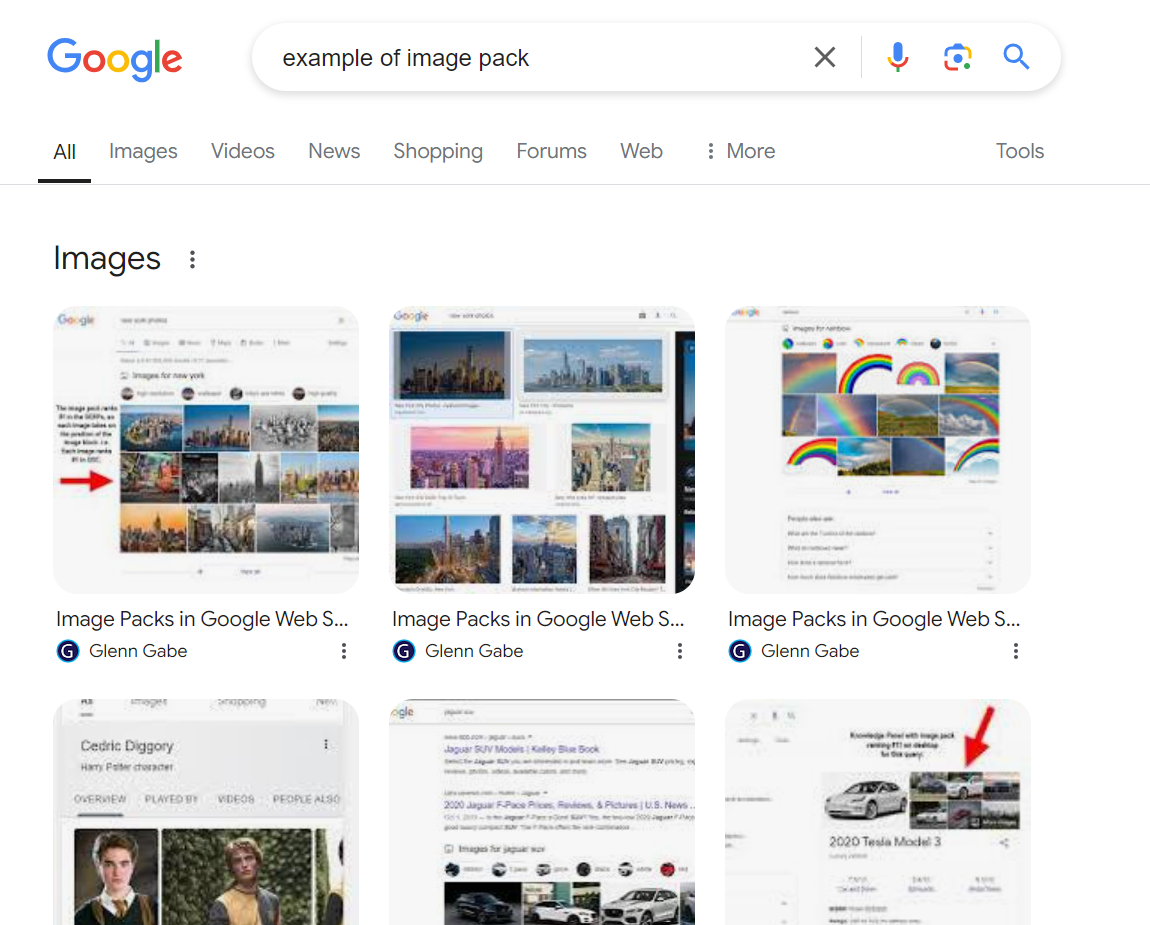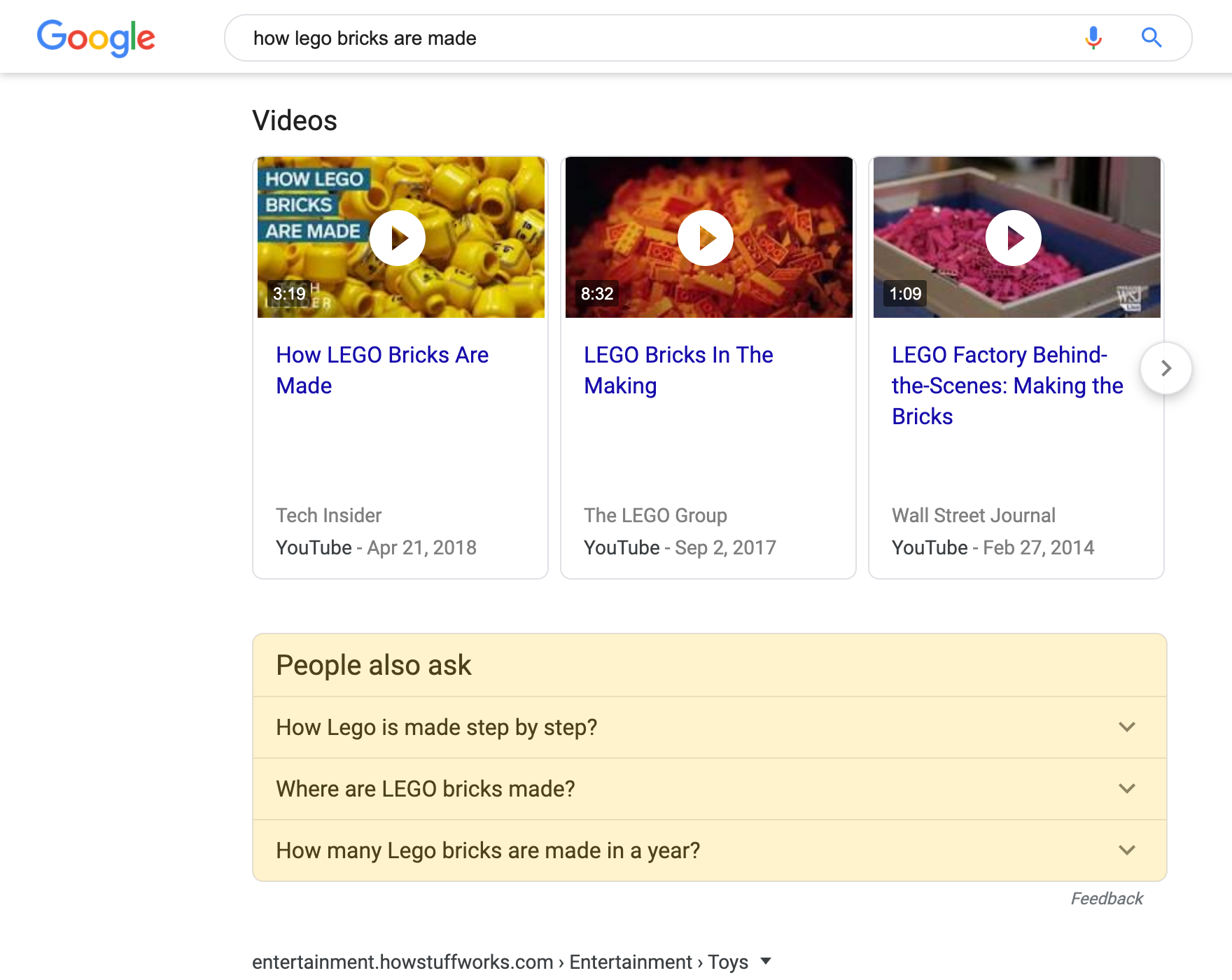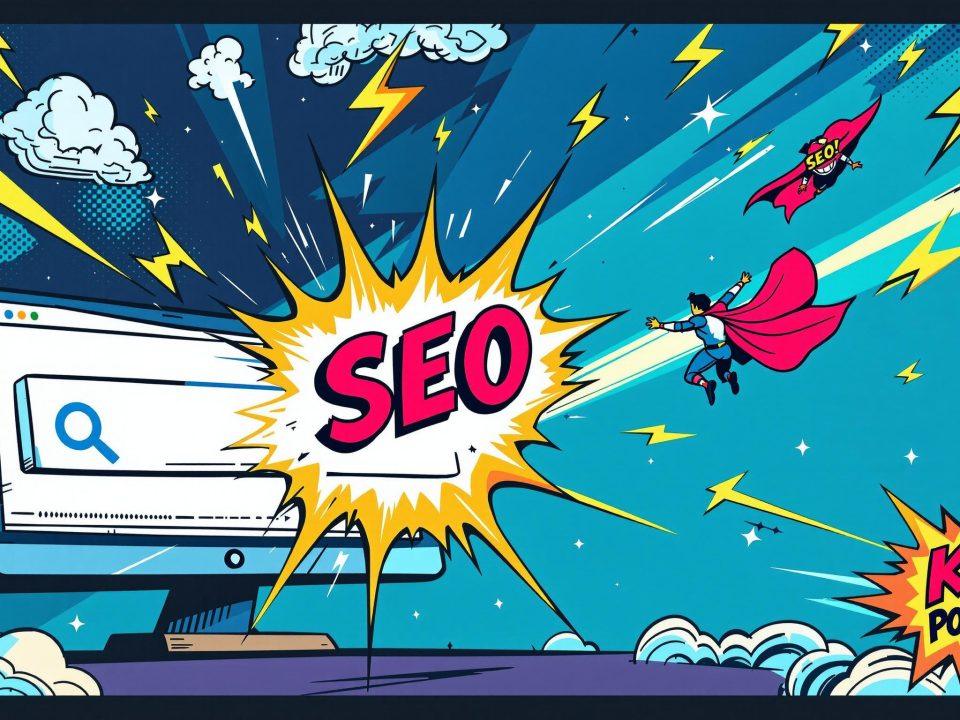For business owners, showing up on the first page of a Google search is the holy grail of digital marketing. But it’s not just about snagging that coveted top spot anymore. It’s about understanding and leveraging Google SERP features to maximize visibility and drive traffic to your site. What exactly are these features, and how can you make them work for your business? Let’s break it down.
Understanding Google SERP Features
Think of Google like a dynamic map. Google SERP features are the landmarks, offering visual appeal and quick answers. Instead of a plain list of blue links, they help users find exactly what they’re looking for.
This benefits businesses by offering new avenues to stand out. To succeed, you need to learn the lay of the land. Familiarizing yourself with elements like the Knowledge Graph, image packs, and rich snippets is key to standing out.
Why Google SERP Features Matter for Your Business
With the rise of Google SERP features, ranking #1 might not guarantee clicks anymore. Imagine searching for the “best pizza near me” and finding a “Local 3-Pack” complete with pictures and reviews.
That’s a SERP feature, and it probably grabbed your attention before even hitting the first organic listing. Now think about it from a business perspective. Getting your bakery featured in that “Local 3-Pack” could mean a flood of hungry new customers.
It’s not just about clicks; it’s about building trust. Appearing as a Google Flights result or a featured snippet instantly boosts credibility in the eyes of your potential customer.

Key Google SERP Features to Focus On
Google boasts a vast array of features. Let’s focus on the superstars that should be on your radar. These powerful features influence how searchers interact with search results.
Featured Snippets: Your Chance to Steal the Show
SERP features such as featured snippets are Google’s way of showcasing the best answer in “position zero” above the organic listings. This could be a paragraph, a list, or even a table—whatever best answers the searcher’s question.
Per Ahrefs, the Featured Snippet gets about 8% of all organic clicks. To win the snippet, create comprehensive, clearly-structured content that directly addresses common questions related to your keywords.
Imagine someone searches for “how to bake sourdough bread.” If you’re a bakery, securing that featured snippet spot with your detailed sourdough recipe will make you an instant baking authority. This can also apply to those leveraging Local SEO to rank in the map pack.
Local Pack: Your Ticket to Local Search Domination
For businesses with physical locations, such as restaurants and shops, the SERP features in the “Local Pack” are essential. Appearing in the “Local 3-Pack,” means prime real estate on search results pages. For “Italian restaurants near me”, the Local Pack is a SERP feature displaying nearby businesses.
To claim your spot, start by claiming and optimizing your Google Business Profile. This involves providing accurate details like your address, phone number, website, and hours. Encourage customer reviews, as those significantly impact your ranking.
People Also Ask (PAA): Anticipating Your Audience’s Curiosity
The “People Also Ask” (PAA) feature is about going the extra mile for your audience. These dropdown boxes reveal additional questions related to the initial search query. Think of it as joining a conversation your audience is already having.
Say someone searches for “benefits of yoga.” The PAA might showcase queries like “what kind of yoga is best for beginners?” or “how often should I practice yoga?”
If your content tackles those questions clearly, Google might pull it into the PAA, boosting visibility and positioning you as an expert. According to Advanced Web Ranking, this organic SERP feature shows up in 8.5% of all US-based search queries. So, optimize your content with FAQs. Think like your audience and anticipate their questions.
Knowledge Graph: Cementing Your Brand’s Online Presence
Google knowledge panels are boxes containing information about people, places, or things. Claiming this prized piece of SERP real estate for your brand requires consistency. Google draws data from several sources, including your website, Wikipedia (if you have one), and, most importantly, your Google Business Profile.
To maximize your chances of earning that knowledge panel, maintain accuracy and consistency in information. This is how you can begin ranking for the shopping ads, too.
Think of it as building your brand’s Google business card. Make it clear, informative, and appealing.
Sitelinks: A Guided Tour of Your Website
Sitelinks often emerge to help users discover the offerings of a certain site. They function like convenient shortcuts within search results. Instead of digging deep, they can immediately access important pages directly from your brand’s main listing on Google. This improves user experience and demonstrates your website’s organization.
The chances of earning sitelinks increase with quality SEO practices. Maintaining consistent branding across your online platforms and having a clear website architecture also helps. A logical internal linking structure is another contributing factor.
Image Pack: Because Sometimes, A Picture Is Worth a Thousand Words
They say “don’t judge a book by its cover,” but on Google, visual appeal can be your biggest asset. An Image Pack, or image packs as they’re sometimes called, pops up in search results as a series of eye-catching images in a row. The pack typically appears when Google believes a visual representation will best address the query.
Optimize your image alt tags, choose high-quality pictures and video thumbnails, and make sure your website is image-friendly. This is your moment to showcase what you’ve got, especially if your business thrives on visuals. You can also appear in the video carousel if you have high-quality video content.
 Image Caption
Image Caption
Making Google SERP Features Work for You
Reaching the top of Google’s search results used to be the ultimate goal. With Google SERP features changing the game, that coveted first position might not always promise the same volume of clicks as it once did. Understanding their role can transform your SEO strategy.
Keep in mind that securing real estate among Google SERP features isn’t about gaming the system. It’s about giving the people what they want: clear, concise, and relevant information. By prioritizing your audience’s needs and creating valuable content, you are setting yourself up for long-term SEO success.
FAQs About Google SERP Features
What are Google SERP Features?
Google SERP features are unique results that go beyond traditional organic listings. These elements deliver direct, concise, and visual answers to enhance user experience. They streamline the process of finding information quickly.
A Google SERP feature can be a paragraph, a list, a video, or even an interactive element. Examples include calculators, Google News results, and “sitelinks” that appear below a website’s main URL. All of them are tailored to enhance user interaction directly on the results page.
What are the SERP Features Symbols?
While there isn’t a universally standardized list of symbols for Google SERP features, different platforms and tools use diverse visual aids. It’s more important to understand their form and function than to memorize specific symbols.
Look for variations within search results, beyond the typical organic blue links. From eye-catching featured snippets offering immediate answers at the top to knowledge panels or enticing local packs, each type has a distinct visual difference. Their goal is to cater to user needs quickly.
What are the Benefits of SERP Features?
Imagine going to a bakery. Would you rather sift through ingredients to bake a cake or buy a delicious slice readily available? That’s the essence of Google SERP features: serving searchers exactly what they need directly. They enhance user experience by streamlining information-seeking tasks.
For website owners and content creators, snagging these coveted spots is marketing gold. They amplify visibility by providing answers before searchers even need to click on a website. Google offers these “extra links” because it benefits them by keeping users on their search engine.
What are the Components of SERP?
SERPs are made up of more than just organic search results—they’re vibrant landscapes shaped by diverse elements. Google SERPs weave together paid ads, which are your opportunity to strategically place your website front and center for specific keywords and audiences.
Organic results are crafted through the dance of keywords and content relevance. This is your chance to captivate searchers through sheer value. The recipe includes Local Packs—a godsend for businesses eager to lure customers through the digital door directly to their physical location.
Knowledge Graphs appear to provide quick insights on people, places, and things. Rich Snippets offer an enhanced organic result that helps you flaunt eye-catching reviews and extra details. With features continually refined based on user interaction, search intent reigns supreme. Each ingredient contributes to Google’s aim of providing searchers with accurate, engaging answers. Google detects what its users find useful and tailors its offerings accordingly.
Conclusion
Mastering Google SERP features in the realm of SEO isn’t just about understanding an intricate system. It’s about building your credibility with useful content that sets you apart. By adapting to the evolving nature of Google SERPs, you can amplify your online presence and reach a broader audience.









